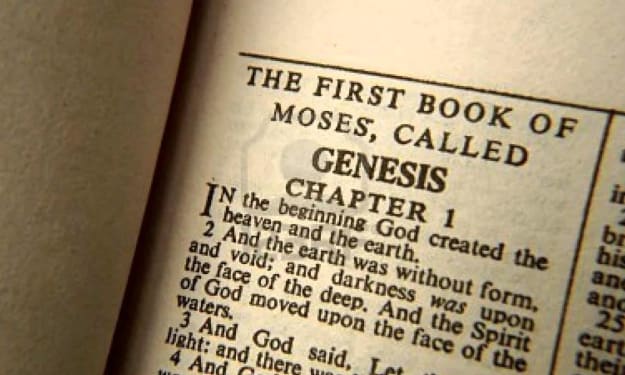Pluralistic Coexistence
Article analysis of "From Diversity to Pluralism" by Diana Eck

OUTLINE
In this article, Eck describes the concept of pluralism. She talks a lot about the distinction between pluralism and diversity. Pluralism goes beyond what diversity is. It is something along the lines of diversity with coexistence. The concept of pluralism is built on the idea of engagement, and creating a harmonious society out of these different cultures in our country. This is a key distinction from diversity, which does not rely on interactions between groups.
Eck highlights how people respond differently to diversity and change. Some are hostile and unmoving, while others embrace it with open arms. The author details pluralism as one of the many responses society can have to the new diversity that we must learn to deal with, which we must learn to deal—and change deal to cope. We will only ever be as strong as our weakest link, and we are hurting ourselves by isolating sections of our community. To create a strong country, everyone has to embrace and uphold those with whom we live. A society has to work towards pluralism.
Throughout history, Americans have responded to diversity in different ways. Eck focuses on the terms of exclusion, assimilation, and pluralism. Exclusionists want to ostracize what is unfamiliar to them. They feel threatened by what they do not understand. Pluralism, unlike exclusionism, is based on accepting those different from you, regardless of how you feel. Others believe that everyone should come together to create one society that is uniform across the board; the American melting pot. All multiplicity and variance are left behind to produce one homologous country.
The writer makes an effort to point out how the present mirrors these same ideas of the past. There are ever-present massive divides in our country that we are still trying to overcome religiously and culturally. People often react with hostility and fear when newcomers arrive. Others have reacted more positively to this diversity thrust upon them, focusing on building new relationships and religious communities. Eck writes about the new interfaith foundations that have developed throughout American cities that are fostering a new time of prosperity and coexistence.
Eck takes time to analyze the foundation of our country, looking at the phrase “We the people…” She talks about how our society needs to reevaluate what our definition of “we” is to be all-inclusive to the new cultures and religions around us. Eck then goes on to detail the different aspects of pluralism.
As stated previously, pluralism and diversity are different. One can observe diversity, while one has to participate in pluralism. Pluralism is a two-way street with mutual interaction and reciprocation to better ourselves and the world around us. It is important that we facilitate inclusive discussions amongst all cultures and religions. Each cultural group brings their multifaceted and unique differences to create building blocks for this new pluralistic community. Pluralism and tolerance are not one and the same, though tolerance is one of the key characteristics that make up pluralism. Tolerance on its own still allows for us to look at the world through prejudicial lenses. For pluralism to work, our tolerance of others must be inherently unbiased, and stereotypes must be thrown aside. Our community should be built on understanding and compassion rather than shallow acceptance and ignorance. Our society must be accepting of others different from us, while abolishing cultural ignorance and religious stereotypes. We will only ever be as strong as our weakest link, and we are hurting ourselves by isolating sections of our community. To create a strong country, everyone has to embrace and uphold those with whom we live. “We” must build and work towards the country “we” wish to live in.
In summary, some religious institutions have done well to adapt to the rise of diversity, and some have not. The Christian churches have done a lot to hinder the process and to advance it. The Catholic and Protestant churches have started changing for the better to be more inclusive and accepting of other religious institutions.
INSIGHT
I did not particularly like how the article was organized or the author’s writing style, but she makes a good point. I appreciate some of the ideas and views she brought to the table. I never put much thought into the concept of pluralism until I read this article. I gained a new perspective from Eck’s writing. It made me take a close look at the groups in our society that make a difference in bringing people thoughts and education together. The best example I have experienced is attending Concordia. The most important takeaway from this piece is Eck’s view of pluralism, and how it affects our communities and country as a whole. It is also important to look at the distinction she makes between diversity and pluralism. A big part of her definition of pluralism was built on her comparisons to exclusion, assimilation, and tolerance.
Eck talked about how pluralism can be good for the country. She discusses hostility that different religious groups and cultures have suffered because of intolerance and fear. Pluralism would help remedy this issue and create a better environment for others. Eck also stated how pluralism has already brought groups together in positive environments in which they have been encouraged to interact, share ideas and value systems. An example she uses is the different religious groups in Omaha coming together to build a tri-faith campus.
QUESTIONS
- Can we apply pluralism to other parts of our society like politics and not just religion?
- What concessions as a society will we have to make in order for pluralism to succeed?
- With coexistence comes compromise. How do we change ourselves to be able to live well among our new counterparts? This is a hard question. I think that this leads to the idea of assimilation. Do we give up some of our ideals to live with others, or do we make others change to fit our agenda? This is where we have to learn to compromise to build a society filled with communities living together as one.
- If pluralism is about coexistence with people of other faiths, does that mean we should sit back idly instead of evangelizing?
About the Creator
Almárëa Laurësil
I'm an aspiring writer, artist, and musician.






Comments
There are no comments for this story
Be the first to respond and start the conversation.